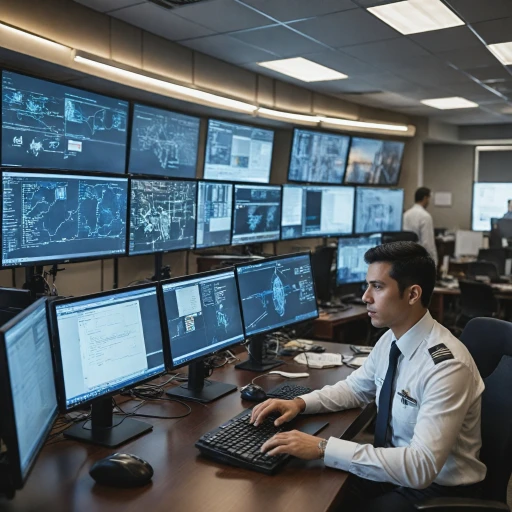
Understanding the Dynamics of Leadership
Grasping the Core of Leadership Dynamics
In the ever-evolving landscape of organizational leadership, understanding the dynamics of leadership is crucial for any leader aiming to steer their organization towards success. Leadership is not just about holding a title; it’s about influencing and guiding a team towards achieving business goals. Effective leaders possess a blend of skills that enable them to navigate complex organizational structures and drive change.
Leadership dynamics involve a deep comprehension of how different elements within an organization interact. This includes recognizing the impact of leadership styles on team performance and organizational culture. Leaders must be adept at decision making, balancing the needs of employees with the strategic objectives of the organization. This requires a keen understanding of human resources and the ability to foster an environment where innovation can thrive.
Adapting to Organizational Needs
Organizational leaders must be flexible, adapting their strategies to meet the changing needs of their business environment. This adaptability is crucial in navigating change and uncertainty, a theme we will explore further. Leaders must also be prepared to leverage technology to gain a strategic advantage, ensuring their organization remains competitive in a digital age.
For those looking to enhance their leadership skills, pursuing a leadership degree or engaging in continuous learning through online education programs can be beneficial. These programs offer courses that cover various aspects of leadership management, from strategic vision to fostering a culture of innovation. The art of managing up is another critical skill for leaders, enabling them to effectively communicate and align with higher-level executives.
Ultimately, understanding the dynamics of leadership is about more than just personal development; it’s about creating a sustainable impact within the organization. As we delve deeper into strategic vision and execution, the importance of aligning leadership skills with organizational goals will become even more apparent.
Strategic Vision and Execution
Strategic Vision: Illuminating the Path Forward
In the intricate dance of leadership, articulating a strategic vision is pivotal. It requires leaders to balance long-term aspirations with the pragmatic realities of today's business landscape. Organizational leaders must harness their leadership skills to paint a vivid picture of the future, while being agile enough to adapt their strategies in response to an ever-evolving environment. Defining a strategic vision isn't just about projecting where the organization will be in five years; it's about inspiring your team to embark on this journey with you. This involves setting clear goals that align with the organization's mission and values, fostering a sense of purpose across all levels. Effective organizational leaders know that a compelling vision acts as a unifying force, transforming ambiguity into clarity and motivation. Execution is the next frontier, where visionary ideas are melded with concrete action. This requires a deft hand in leadership management, leveraging skills that range from decision making to resource allocation. It's also about building a culture of accountability within the organization, ensuring that every team member feels a sense of ownership over their contributions. For leaders seeking to enhance their capabilities, online education programs and leadership degrees offer invaluable resources. Leading business schools, like those providing HBS Online, offer courses aimed at enhancing leadership skills, often exploring real-world dilemmas through collaborative learning.` Aspiring and current leaders need to embrace an educational mindset, continually refining their abilities to ensure they remain effective in illuminating the path forward. For additional strategies, consider exploring enhancing leadership skills through engaging podcasts. Ultimately, effective leadership lies in the delicate interplay between vision and execution—a dance all organizational leaders must master to steer their companies towards success.Fostering a Culture of Innovation
Encouraging a Mindset of Innovation
In today's rapidly evolving business landscape, fostering a culture of innovation is not just a strategic advantage; it's a necessity. Organizational leaders must cultivate an environment where creativity and new ideas are not only welcomed but actively encouraged. This involves more than just lip service; it requires a deep commitment to nurturing a mindset that embraces change and challenges the status quo.
Empowering Employees to Innovate
Empowerment is a critical component of fostering innovation. Leaders should provide employees with the tools and resources they need to experiment and explore new ideas. This could involve offering access to online education programs or encouraging participation in workshops that enhance leadership skills. By investing in learning and development, organizations can build a workforce that is not only skilled but also motivated to drive innovation.
Creating a Safe Space for Experimentation
For innovation to thrive, employees must feel safe to take risks without fear of failure. Organizational leaders should establish a culture where experimentation is valued and failures are seen as opportunities for learning. This involves clear communication from leadership that supports risk-taking and celebrates both successes and failures as part of the innovation process.
Aligning Innovation with Strategic Goals
While fostering innovation is crucial, it must be aligned with the organization's strategic goals. Leaders need to ensure that innovative efforts contribute to the long-term vision of the business. This requires effective leadership management to guide teams in aligning their creative endeavors with the company's objectives, ensuring that innovation drives meaningful change and adds value to the organization.
Leveraging Technology for Innovation
Technology plays a pivotal role in enabling innovation. By leveraging the latest technological advancements, organizations can streamline processes, enhance decision-making, and create new business opportunities. Leaders should be proactive in adopting technologies that support innovation, ensuring that their teams have the digital tools necessary to stay competitive in the market.
Navigating Change and Uncertainty
Steering Through Organizational Transformation
Navigating change and uncertainty is a critical aspect of modern leadership that requires a robust toolkit of skills and strategies. Leaders, particularly those in c-suite roles, must embrace their positions as agents of change. As organizations evolve in response to shifting markets, regulatory landscapes, and technological advances, leaders must guide their teams with precision and agility. Organizations that successfully navigate change often prioritize the following aspects:- Clear Communication: Establishing open lines of communication is essential. Leaders should convey the reasons behind changes, along with their potential impacts, to foster understanding and buy-in from employees. Transparent leadership helps mitigate resistance and creates an environment where team members feel empowered.
- Adaptability: Emphasizing flexibility, leaders should be willing to pivot strategies and approaches when necessary. This involves honing the ability to assess situations quickly and make informed decisions that keep the organization aligned with its strategic goals.
- Continuous Learning and Development: Leaders committed to personal and organizational growth invest in learning. Supporting programs that enhance leadership skills or pursuing degrees in organizational leadership or business administration can help leaders stay ahead of industry trends.
- Involving Teams: Engaging employees in the decision-making process can significantly increase the success rate of organizational initiatives. By empowering teams and incorporating their insights, leaders can foster a sense of ownership, which is crucial for effective change management.
Building and Sustaining High-Performance Teams
The Art of Building Strong and Effective Teams
In today's organizational landscape, success is closely linked to the ability to build and sustain high-performance teams. Organizational leaders must cultivate an environment where their teams can thrive, demonstrating exceptional leadership management skills to unlock their teams' full potential. Establishing such a team requires more than just assembling a group of talented individuals. It involves strategic alignment with the business goals, an understanding of human resources dynamics, and a commitment to ongoing learning development. Leaders play a critical role in this process, and by focusing on the following key strategies, they can enhance not only team performance but also overall organizational success:- Clear Vision and Goals: Effective teams need a clear understanding of the organization's strategic vision. This involves setting achievable and inspiring goals that align with both short-term and long-term business objectives.
- Fostering Open Communication: Strong communication skills are vital in creating a transparent work environment. Leaders should encourage open dialogue where team members feel safe to express their thoughts, ideas, and concerns.
- Empowering Team Members: Trusting employees to take ownership of their tasks fosters a sense of responsibility and accountability. Empowering teams involves delegating authority and providing the necessary resources for them to perform effectively.
- Encouraging Collaborative Efforts: Collaboration not only unites diverse skills and perspectives but also promotes innovation. Leaders should create opportunities for cross-functional teamwork, where collective efforts enhance problem-solving and decision making.
- Investing in Learning and Development: Continuous learning is a hallmark of high-performance teams. Encouraging team members to pursue professional education, such as leadership degrees or tailored business programs, can significantly enhance their skills and capabilities.
- Recognizing and Rewarding Achievement: Celebrating success and recognizing the contributions of team members instills motivation and enhances team morale. Leaders should develop a habit of acknowledging even small victories to build a positive and supportive team culture.














